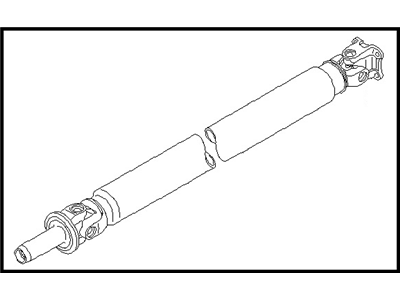×
- Hello
- Login or Register
- Quick Links
- Live Chat
- Track Order
- Parts Availability
- RMA
- Help Center
- Contact Us
- Shop for
- Nissan Parts
- Nissan Accessories

My Garage
My Account
Cart
Genuine Nissan 300ZX Drive Shaft
Axle Shaft- Select Vehicle by Model
- Select Vehicle by VIN
Select Vehicle by Model
orMake
Model
Year
Select Vehicle by VIN
For the most accurate results, select vehicle by your VIN (Vehicle Identification Number).
35 Drive Shafts found
Nissan 300ZX Shaft Assembly-PROPELLER
Part Number: 37000-40P05$717.49 MSRP: $935.45Limited AvailabilityYou Save: $217.96 (24%)Nissan 300ZX PROPELLER Shaft
Part Number: 37000-40P11$747.12 MSRP: $974.08Limited AvailabilityYou Save: $226.96 (24%)Nissan 300ZX PROPELLER Shaft
Part Number: 37000-02P12$657.89 MSRP: $857.74Limited AvailabilityYou Save: $199.85 (24%)Nissan 300ZX Shaft Assembly-PROPELLER
Part Number: 37000-40P00$717.49 MSRP: $935.45Limited AvailabilityYou Save: $217.96 (24%)Nissan 300ZX PROPELLER Shaft
Part Number: 37000-30P01$717.49 MSRP: $935.45Limited AvailabilityYou Save: $217.96 (24%)Nissan 300ZX PROPELLER Shaft
Part Number: 37000-40P01$717.49 MSRP: $935.45Limited AvailabilityYou Save: $217.96 (24%)Nissan 300ZX Shaft Assembly PROPELLER
Part Number: 37000-40P02$717.49 MSRP: $935.45Limited AvailabilityYou Save: $217.96 (24%)Nissan 300ZX Shaft Assembly PROPELLOR
Part Number: 37000-40P03$717.49 MSRP: $935.45Limited AvailabilityYou Save: $217.96 (24%)Nissan 300ZX PROPELLER Shaft
Part Number: 37000-40P06$717.49 MSRP: $935.45Limited AvailabilityYou Save: $217.96 (24%)Nissan 300ZX Shaft Assembly PROPELLER
Part Number: 37000-40P07$717.49 MSRP: $935.45Limited AvailabilityYou Save: $217.96 (24%)Nissan 300ZX Shaft Assembly PROPELLER
Part Number: 37000-40P08$717.49 MSRP: $935.45Limited AvailabilityYou Save: $217.96 (24%)Nissan 300ZX Shaft Assembly-PROPELLER
Part Number: 37000-40P15$717.49 MSRP: $935.45Limited AvailabilityYou Save: $217.96 (24%)Nissan 300ZX PROPELLER Shaft
Part Number: 37000-40P16$717.49 MSRP: $935.45Limited AvailabilityYou Save: $217.96 (24%)Nissan 300ZX Shaft Assembly PROPELLER
Part Number: 37000-40P17$717.49 MSRP: $935.45Limited AvailabilityYou Save: $217.96 (24%)Nissan 300ZX Shaft Assembly PROPELLER
Part Number: 37000-40P18$717.49 MSRP: $935.45Limited AvailabilityYou Save: $217.96 (24%)Nissan 300ZX Shaft Assembly-PROPELLER
Part Number: 37000-40P10$747.12 MSRP: $974.08Limited AvailabilityYou Save: $226.96 (24%)Nissan 300ZX Shaft Assembly-PROPELLER
Part Number: 37000-40P12$747.12 MSRP: $974.08Limited AvailabilityYou Save: $226.96 (24%)Nissan 300ZX Shaft Assembly PROPELLER
Part Number: 37000-40P13$747.12 MSRP: $974.08Limited AvailabilityYou Save: $226.96 (24%)
| Page 1 of 2 |Next >
1-20 of 35 Results
Nissan 300ZX Drive Shaft
If you need any OEM Nissan 300ZX Drive Shaft, feel free to choose them out of our huge selection of genuine Nissan 300ZX Drive Shaft. All our parts are offered at unbeatable prices and are supported by the manufacturer's warranty. In addition, we offer quick shipping to have your parts delivered to your door step in a matter of days.
Nissan 300ZX Drive Shaft Parts Questions & Experts Answers
- Q: How do you properly remove and reinstall a driveshaft while ensuring it remains balanced on Nissan 300ZX?A:Raise the vehicle and support it securely on jackstands. Remove the catalytic converter. Take off the heat shield above the catalytic converter and the rear cross bar. Loosen the emergency brake cable adjuster and detach it from the cable. Disconnect the emergency brake cable spring from the rear crossmember. Remove the rear sway bar-to-frame hold down nuts and allow the sway bar to hang down. Mark the driveshaft and pinion flanges with paint to ensure the shaft can be reinstalled in its original position, as the driveshaft and companion flange are balanced at the factory and must maintain their original alignment. Loosen the rear flange nuts; it is not necessary to hold the bolt heads since they are secured by the flange casting. Remove the bolts and lower the driveshaft while sliding it rearward from the transmission extension housing. Installation is the reverse of removal, ensuring the aligning marks on the flanges match. To correct an unbalanced shaft, remove the driveshaft and eliminate any undercoating or foreign material that could affect balance. Reinstall the driveshaft and conduct a road test. If vibration persists, disconnect the driveshaft at the differential carrier companion flange, rotate the flange 180°, and reinstall the driveshaft. After installation, perform another road test, and if vibration continues, replace the driveshaft assembly.














